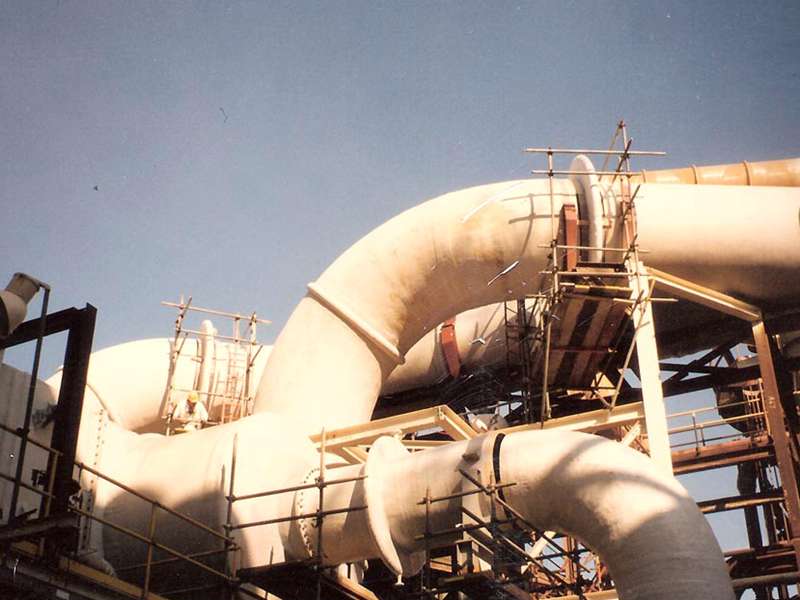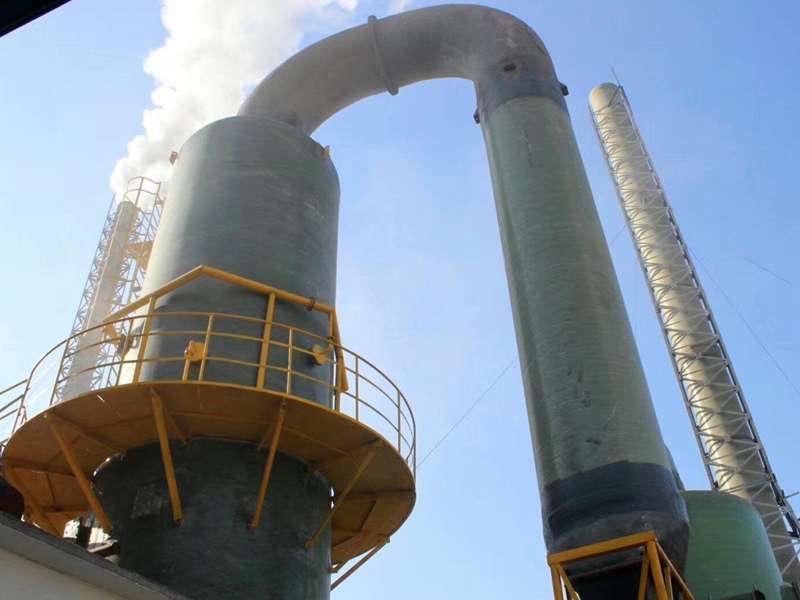Duct System: Energy-Efficient, Low-Leakage, Custom
FRP Ducting That Doesn’t Blink at Corrosion
If you’ve wrestled with acid-laden exhaust or damp chlorine scrubbers, you know metal ducts can surrender early. I’ve toured plants where the maintenance team kept a bucket of patch kits next to the fan. When we trialed the Duct System from JRain FRP in Hebei, the first surprise was how light the sections felt—then how quiet the line got after installation. Different story entirely.

What It Is, Where It Fits
The Duct System is fiberglass-reinforced plastic (FRP) ducting for corrosive gas transport—chlorine, HCl, SOx/NOx flue gas, ammonium vapors, you name it. Shapes are round, rectangular, or special forms to dodge structural steel or squeeze past cable trays. Origin: No. 1289, Yingbin South Street, Jizhou District, Hengshui, Hebei, China—yes, an area with deep FRP manufacturing roots.
Typical applications: chemical scrubbers, pickling lines, pulp & paper bleach plants, wastewater off-gas, battery manufacturing exhaust, microelectronics acid fume capture, and maritime stack after-treatment. Many customers say the changeover paid for itself in fewer shutdowns—honestly, not shocking.
Industry Trends (and a blunt note)
We’re watching a steady pivot from galvanized to composites where pH is hostile and air is wet. To be honest, fire performance used to be the sticking point. Now, halogen-free fire-retardant resin systems with ASTM E84 Class A options have moved the goalposts. Also, tighter ESG reporting is nudging plants to reduce solvent-heavy maintenance—FRP helps by just not corroding as fast.
How It’s Built (Process Flow)
- Materials: E-glass structural fabrics; C-glass/veil corrosion barrier; resin choices—vinyl ester (chlorine/HCl), isophthalic polyester (general), epoxy vinyl ester (high temp); UV topcoat optional.
- Methods: Hand lay-up with corrosion barrier (≈2.0–3.0 mm) + structural laminate; filament winding for round duct and elbows; CNC-cut flanges.
- Cure & Post-cure: Controlled exotherm cure; post-cure to lock in Barcol hardness (ASTM D2583) and heat deflection stability.
- Testing: Tensile (ASTM D638), flexural (ASTM D790), laminate quality (ASTM D2563), flame/smoke (ASTM E84), leak test to ≈1.5× operating static pressure (SMACNA guidance), spark testing for liners (ASTM D5162 when specified).
- Service Life: around 25–40 years in typical scrubber duty; real-world use may vary with chemistry and temperature.
- Certs & QA: ISO 9001 factory QA; resin CoA traceability; optional third-party inspection per ASME RTP-1 principles for FRP equipment.

Key Specs (typical)
| Shapes | Round, rectangular, specials (custom elbows, tees, dampers) |
| Size Range | Ø200–3200 mm round; rectangular up to 3000×3000 mm (larger on request) |
| Resins | Vinyl ester, isophthalic polyester, epoxy VE; FR options |
| Temp Range | -20 to 120°C standard; up to ≈150°C with special resin |
| Pressure Class | ±2500 Pa static (higher by design) |
| Wall Thickness | ≈4–16 mm typical; engineered per span/pressure |
| Fire Rating | ASTM E84 Class A option; smoke ≤450 (spec dependent) |
| Origin | Hengshui, Hebei, China |
Customization & Accessories
The Duct System is built to drawings: transitions, reducers, turning vanes, inspection doors, dampers, FRP or PP-lined flanges, EPDM/PTFE gaskets, conductive resins for ATEX zones, and site joints (butt-wrap or flanged). Actually, field crews love the lighter lifts.
Vendor Comparison (quick take)
| Vendor/Material | Corrosion Resistance | Weight | Install Speed | Fire Option |
|---|---|---|---|---|
| Duct System (FRP) | Excellent in acids/chlorine | Light | Fast | ASTM E84 Class A |
| Galvanized Steel | Poor in acids without coating | Heavy | Moderate | Good, but needs coating |
| PVC/CPVC | Good, temp-limited | Light | Fast | Limited |
| Generic FRP | Varies by resin/QA | Light | Fast | Check data |

Field Notes and Case Snippets
Battery plant, ASEAN: vinyl-ester Duct System replaced coated steel. Static pressure held at 1800 Pa; leak test at 1.5× passed; maintenance calls dropped ≈60% in the first year. “No rust flakes in the fans—finally,” the maintenance lead said.
Pulp mill bleach area: rectangular FRP with turning vanes improved capture efficiency by ~12% (operator’s figures) and cut fan power slightly—less turbulence, apparently.
Why Teams Pick It
- Corrosion immunity where metals struggle.
- Lower structural loads; smaller cranes on retrofit jobs.
- Custom shapes that actually fit the plant (sounds trivial until you try it).
- Documented testing to ASTM/SMACNA; traceable QA.
Authoritative references
- SMACNA HVAC Duct Construction Standards—Metal and Flexible, leakage and pressure guidance.
- ASTM E84: Standard Test Method for Surface Burning Characteristics of Building Materials.
- ASTM D638/D790/D2563: Mechanical and laminate quality standards for FRP.
- ASME RTP-1: Reinforced Thermoset Plastic Corrosion-Resistant Equipment (QA principles for FRP fabrication).
Latest news
-
Rectangular Tank Made of Fiberglass Material – Durable, Cost-Effective Liquid Storage SolutionsNewsNov.24,2025
-
Hollow Drill Rods for Efficient Drilling Operations in the Field | Durable, Lightweight & CustomNewsNov.23,2025
-
Powerful yt27 Rock Drill for Tough Mining Surfaces | Durable & PortableNewsNov.23,2025
-
Why the Reversible Drill Bit Is a Versatile Tool for All Your Drilling NeedsNewsNov.22,2025
-
Fiberglass Food Grade Equipment: Key Features, Benefits & Global ImpactNewsNov.22,2025
-
How a Drilling Rod Spirals Down Into the Earth: Tech, Trends & Global ImpactNewsNov.21,2025











